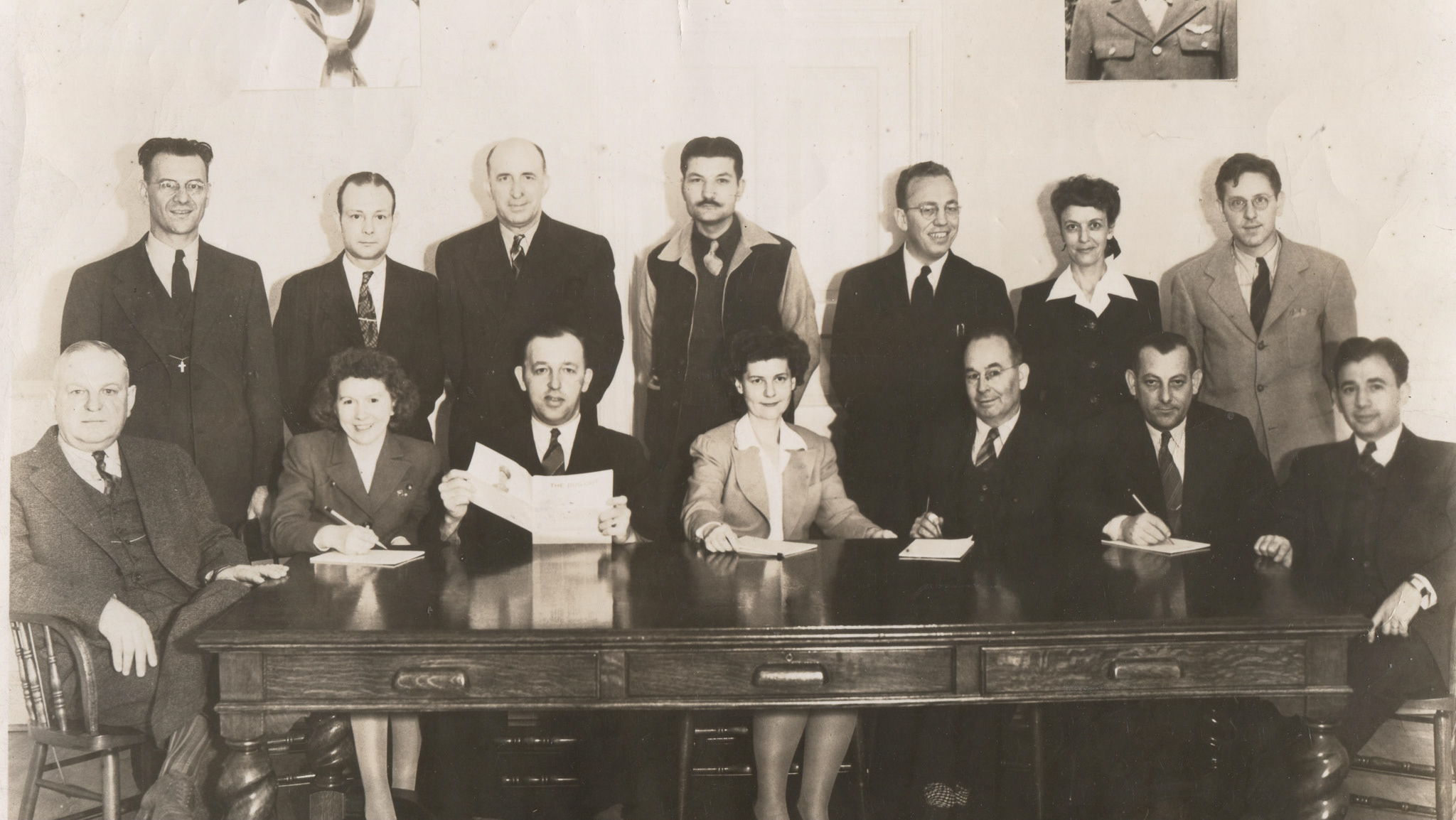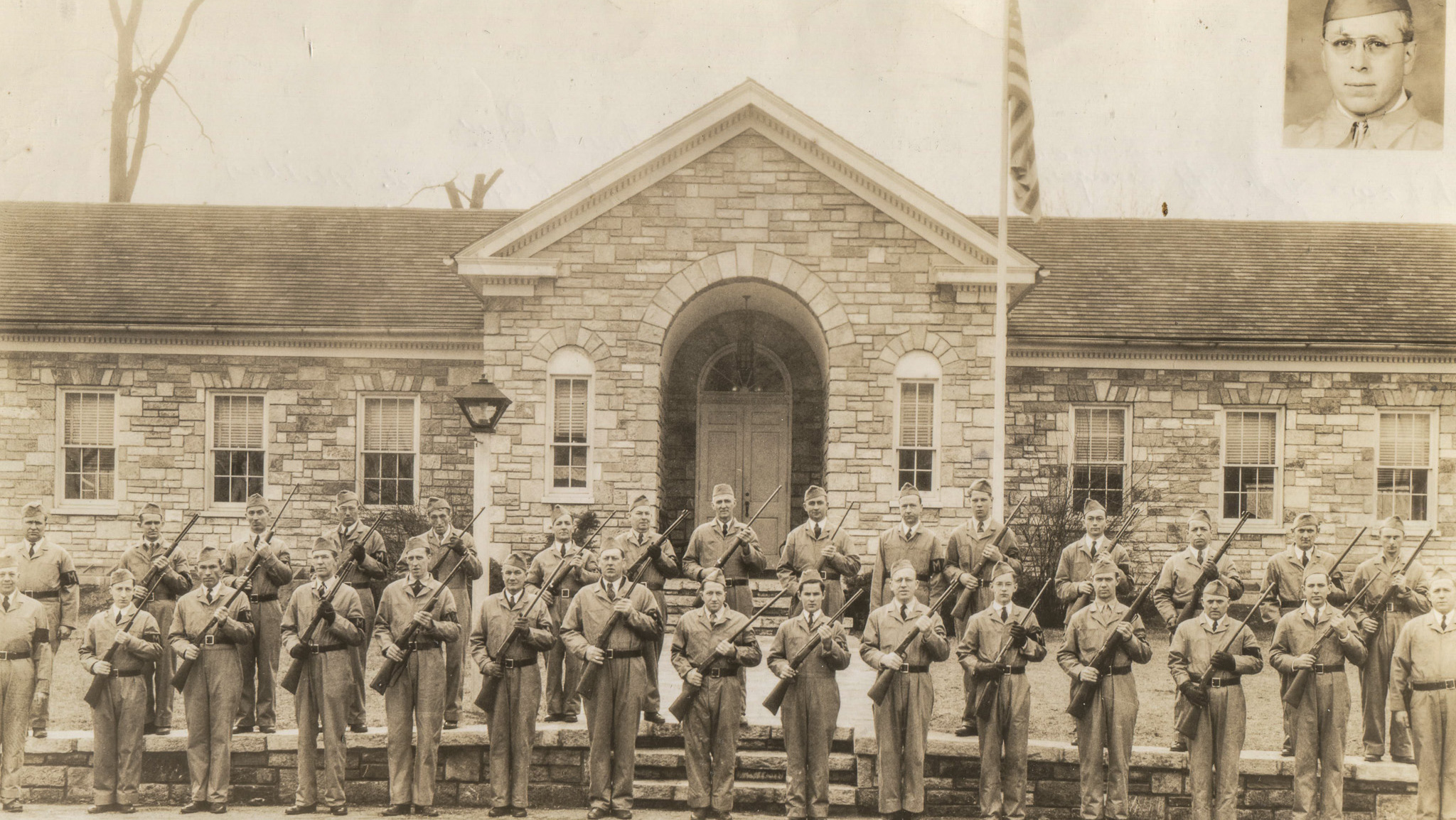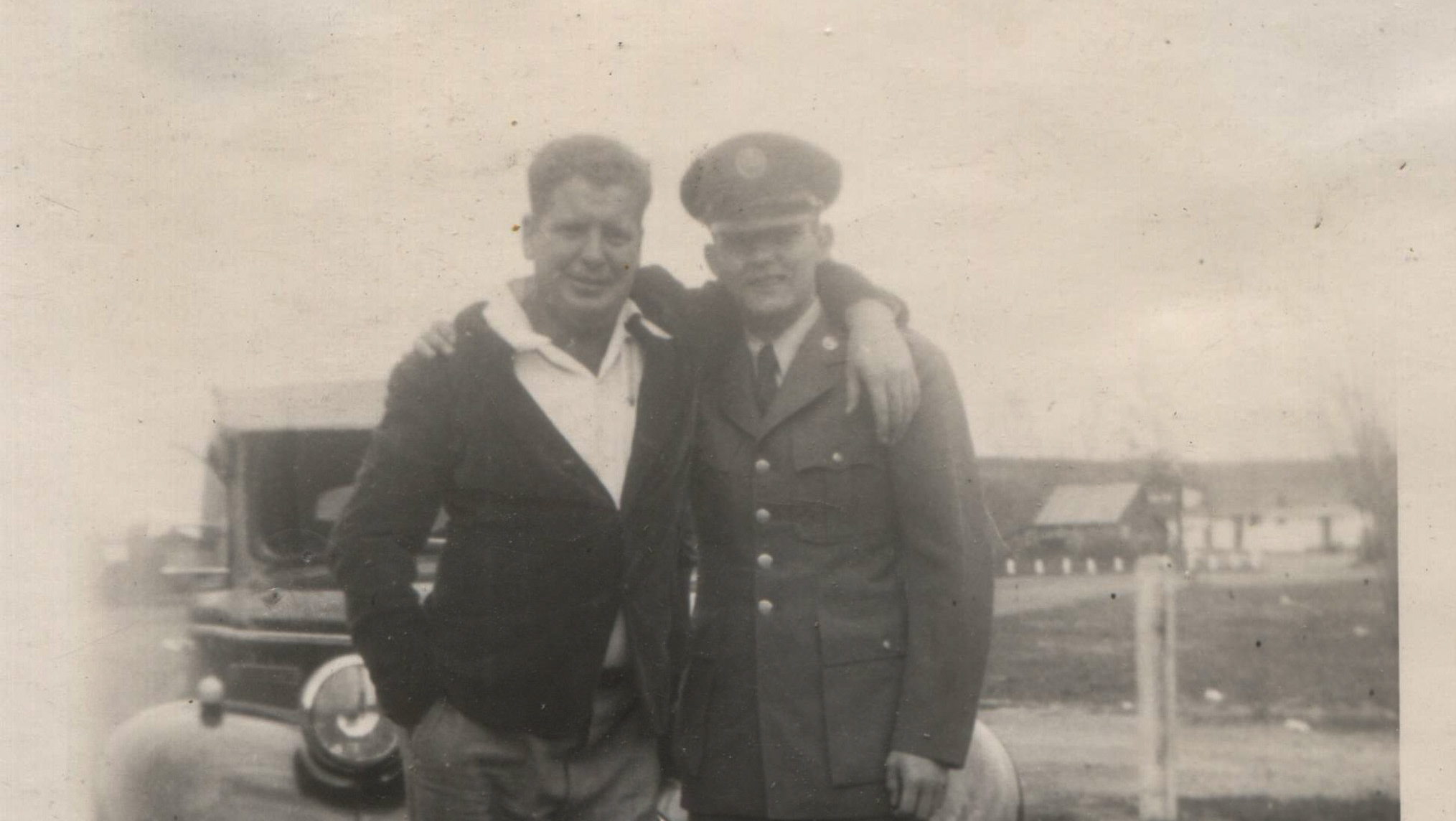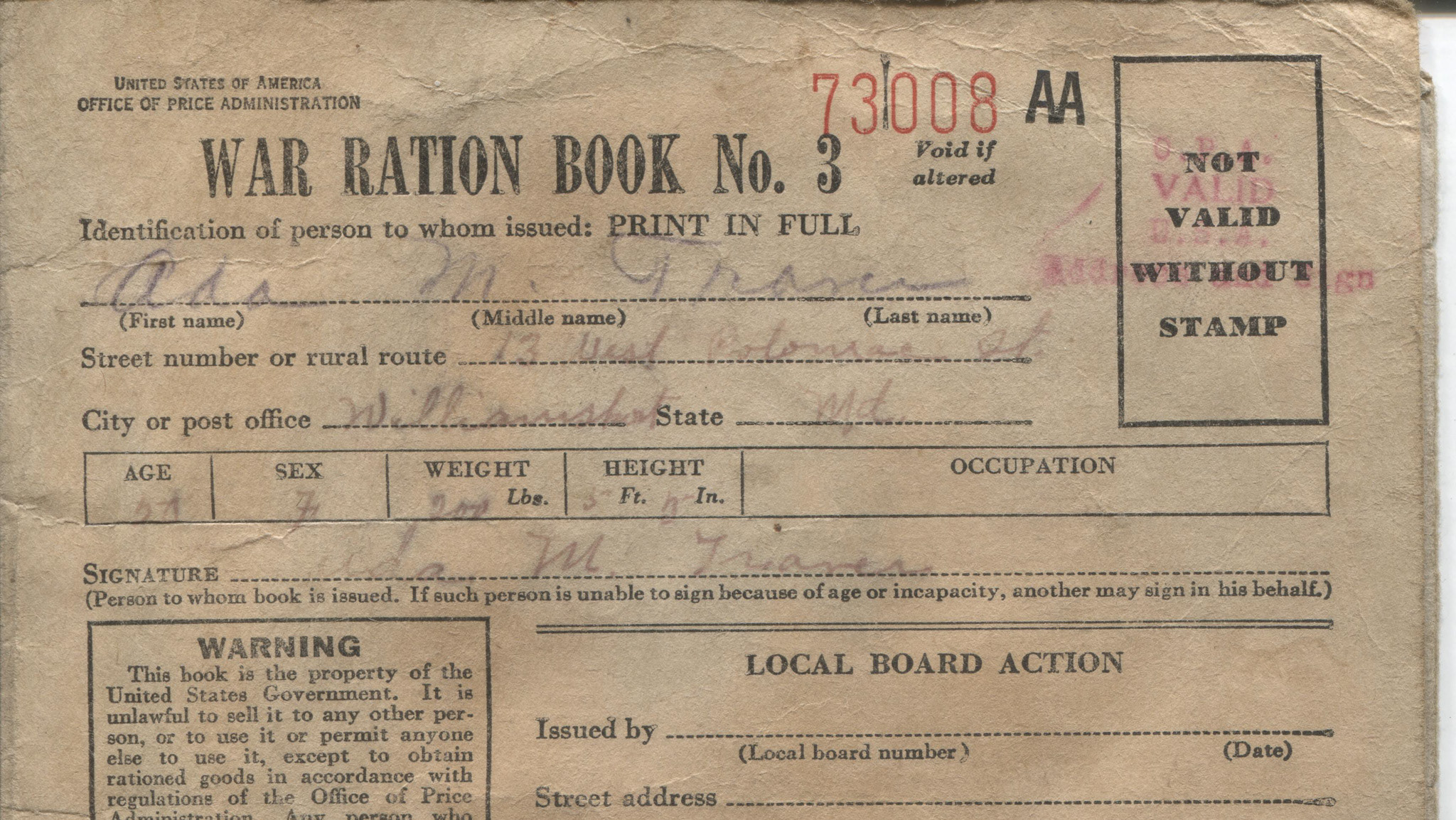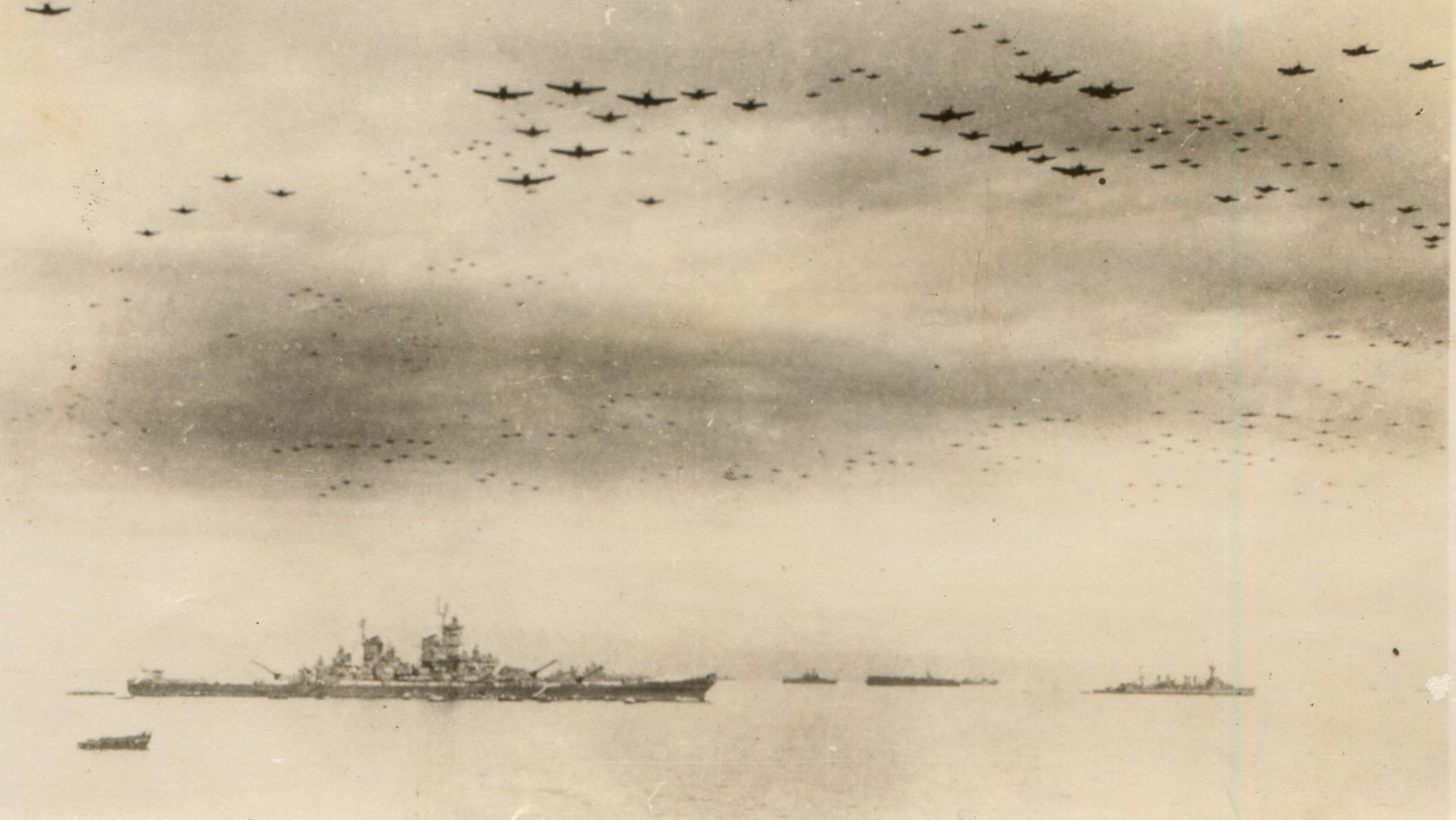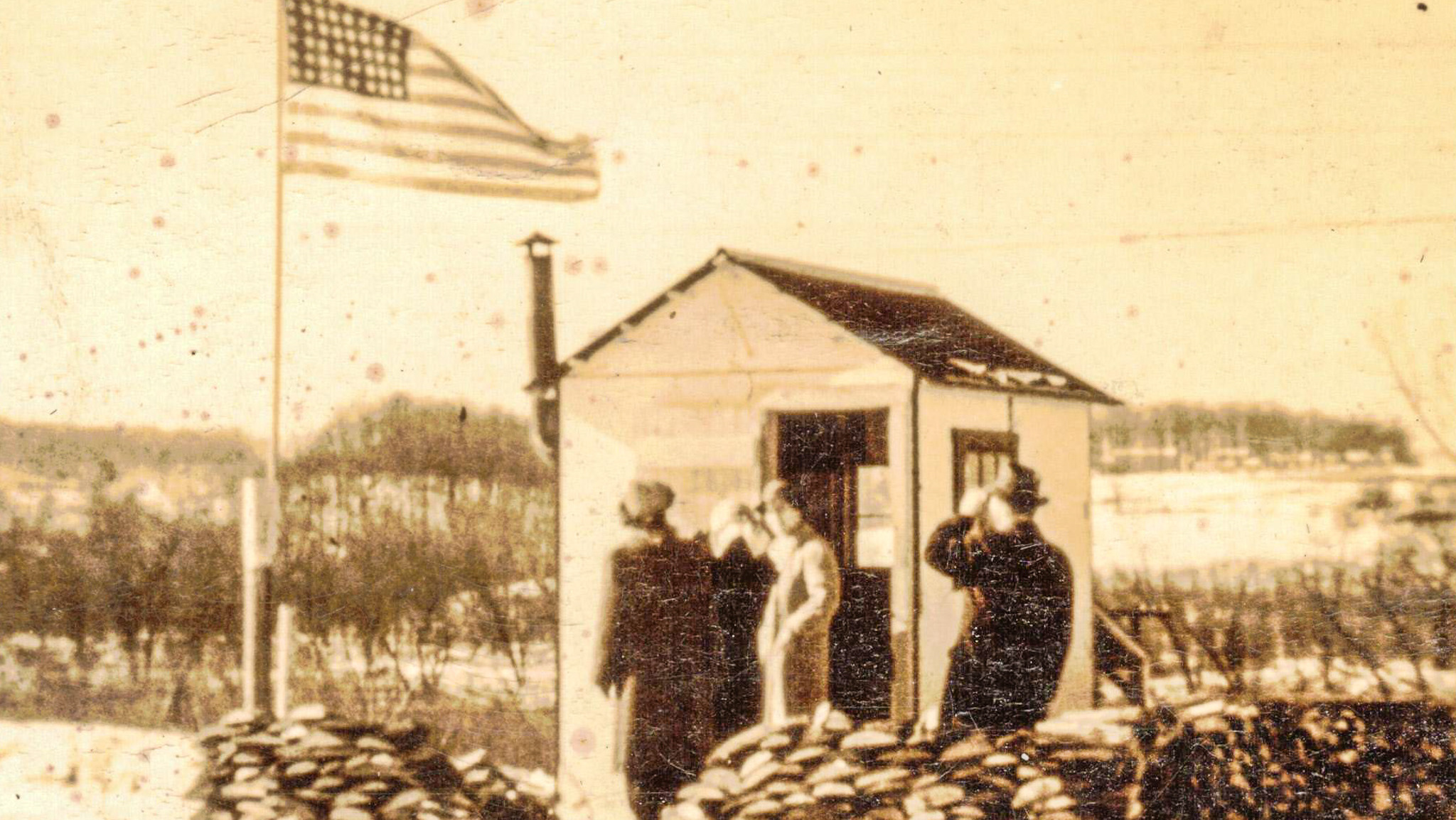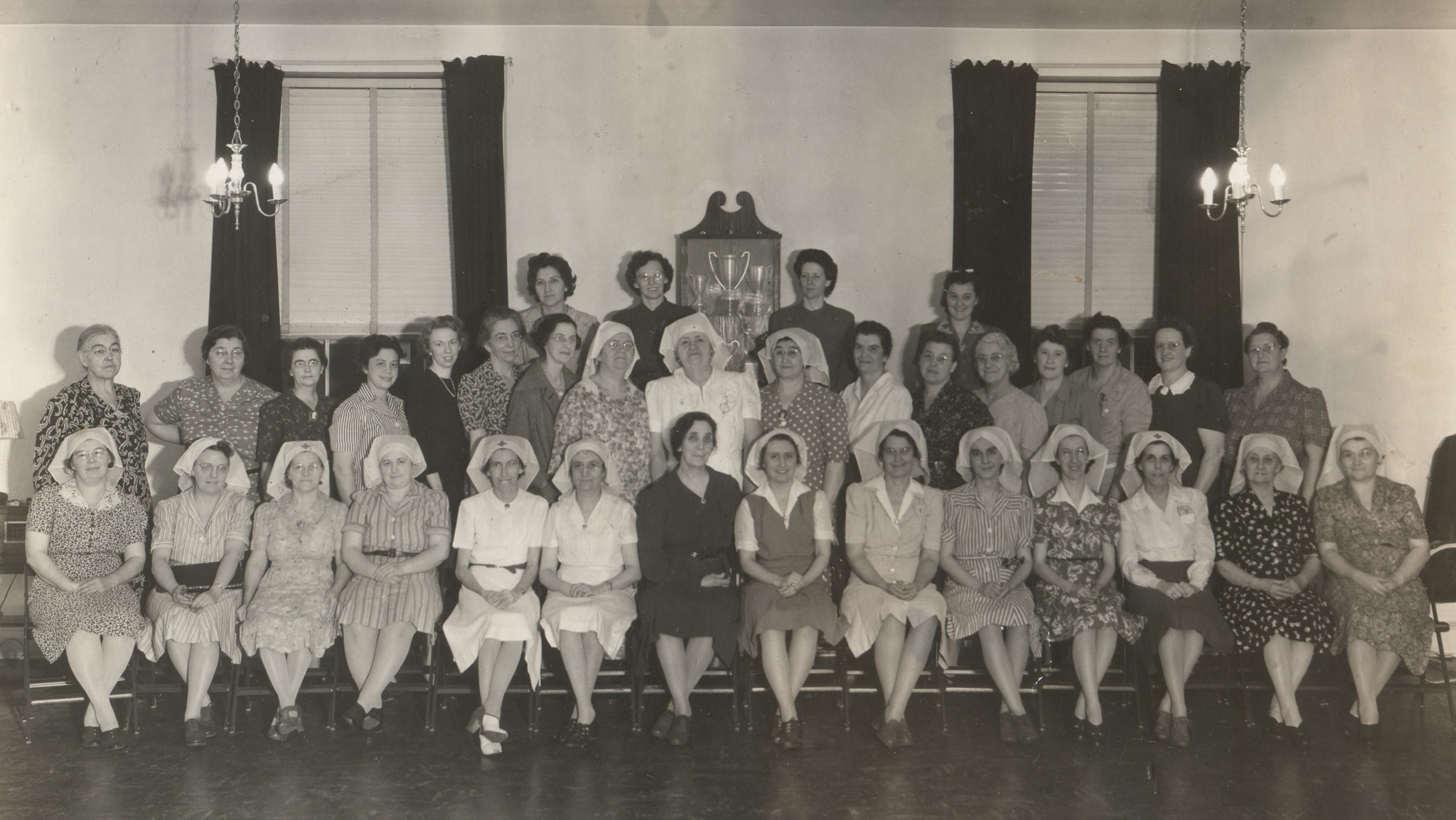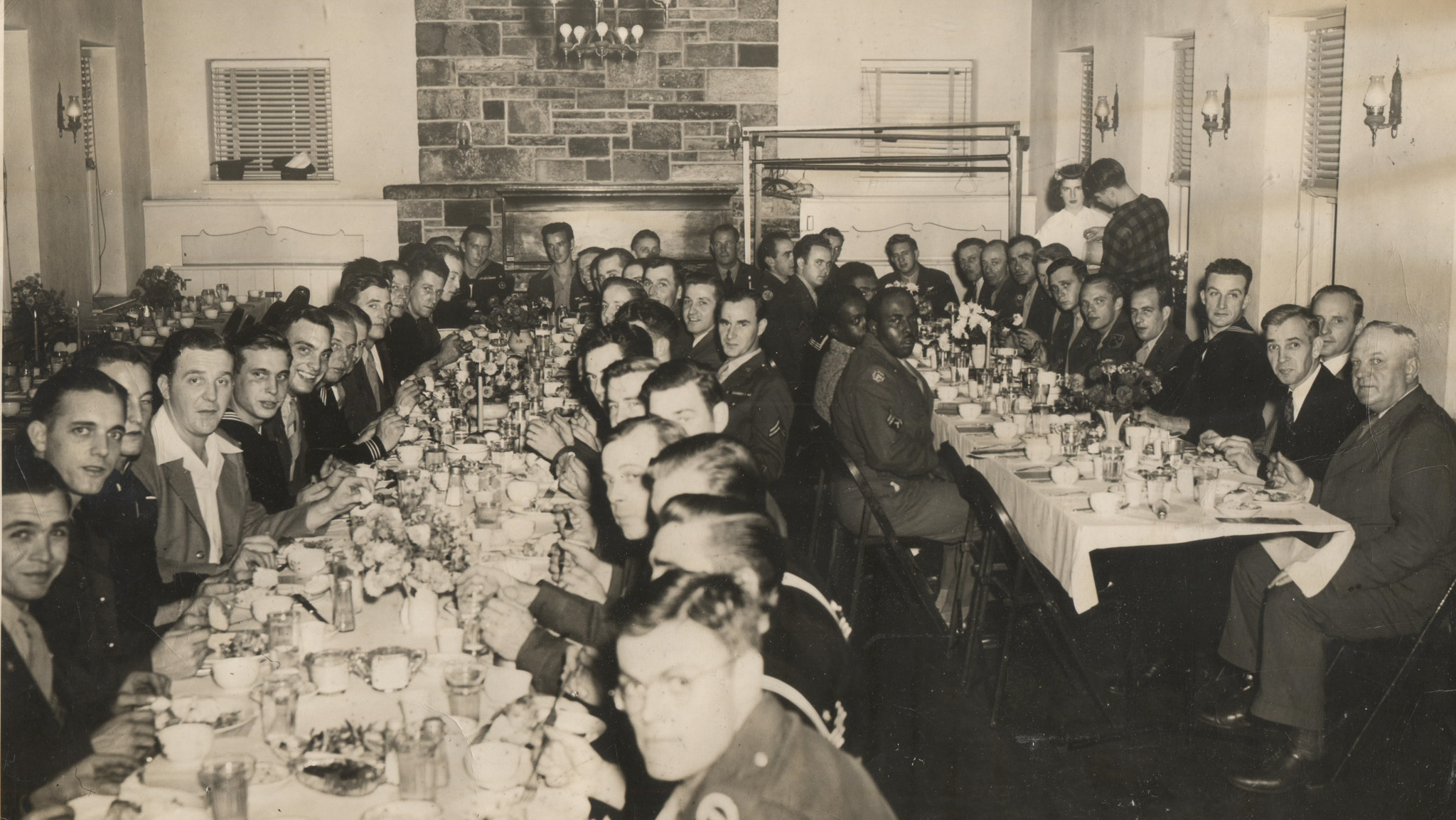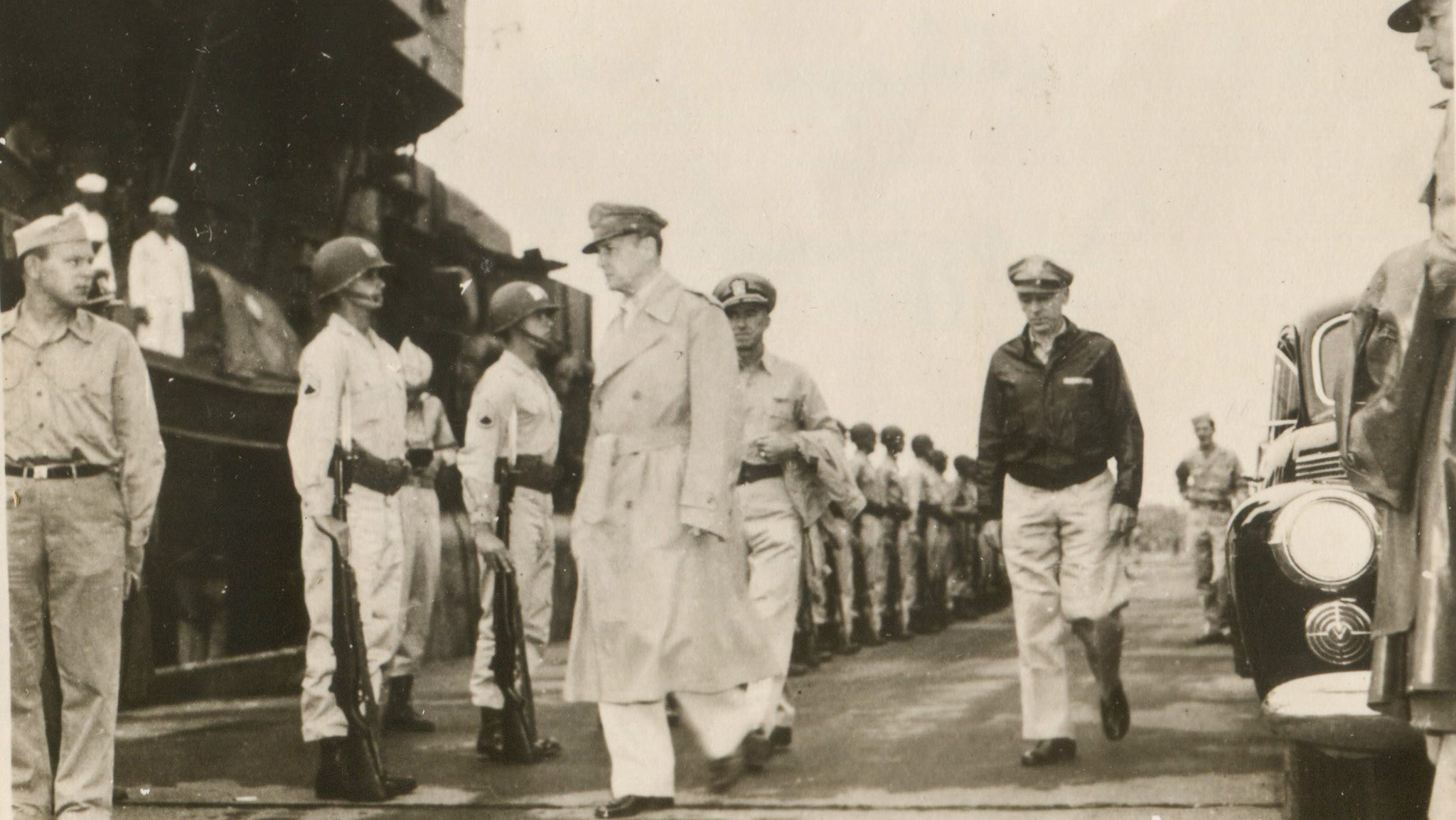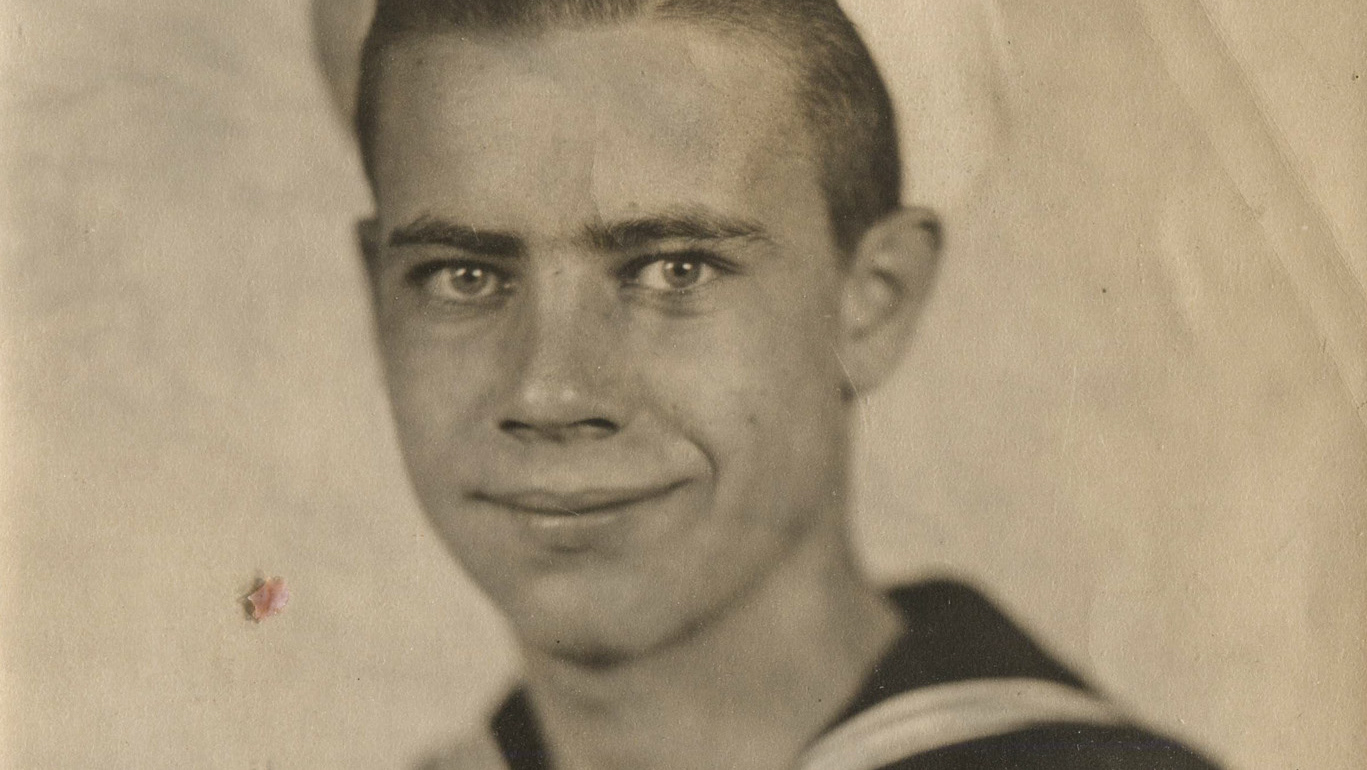During WWII, the American military blossomed from 174,000 in 1939 to a peak of over eleven million service members. American training facilities published a variety of camp newsletters designed to keep servicemen informed on war news, military entertainment, parades, and sports that were held on and off base in the surrounding communities. The most well-known and oldest military newsletter is Stars & Stripes, published and distributed by the Department of Defense. The engineer army Camp Sutton in Monroe, NC published The Carry All, Naval Camp Peary near Williamsburg, VA, printed The Bee Lines, and The Wharf Rat at Redwood City, CA, to name a few. There were even specialty newsletters such as the service women’s W.A.C. News from Fort Des Moines, IA, and the Black Panther for African American troops stationed at Fort Bragg, NC.
Many small towns across America followed suit and published newsletters to keep local service members connected with their hometowns. In Georgia, the Clarkston Clarion - Devoted to our Boys and Girls at Home and Abroad was published from September 1943 until November 1944. Dekalb County, GA issued CHIPS, as in Chips off the old Rock. In Amber, Pa, the local Presbyterian church mimeographed a total of 44 newsletters over four years and was proud of its over 300 monthly circulations. However, the undisputed champion was the United Service Club's (U.S.C.) Dug-Out published in Williamsport, Maryland. Printed from November 1942 until October 1945, the last issue boasted a circulation of over 2,000 copies distributed worldwide.
THE DUG-OUT
A MORALE BUILDER FOR THE ARMED FORCES
Organized under President Irwin W. Traver, the mission of U.S.C. was
“To render all aid and support in the way of entertainment and morale building in the armed forces of the U.S.A.”
The team was dedicated to seeing it delivered to local service members worldwide. George "Hooper" Wolfe wrote that The Dug-Out was intended to “make you feel at home where you are” and mailed free “to every mother’s son” in the armed forces, whether at Camp Meade or India, with copies scattered all over the world from jungles to London.
Wolfe credited Irvin “Nip” Traver (toll collector) as the originator of the idea for the newsletter. Williamsport High School English teacher Margaret Jenkins was appointed editor, Hooper Wolfe general manager, and business manager Adam Harsh. The U.S.C.’s first edition of 500 copies was distributed on November 18, 1942. The six-page, typewritten newsletter was printed, stapled, folded, and mailed by volunteer staff from the “general and strictly unofficial” headquarters in the back room of Wolfe’s General Store on the corner of Potomac and Conococheague Streets. The newsletter was mailed to every service member worldwide for which the team could scour an address. The girl scouts pedaled the remaining copies on the town streets at the cost of 10 cents. The first edition of The Dug-Out sold out.
The second and third editions were also hand-typed and stapled together in Wolfe’s store. As generous local support and donations for the newsletter rolled in, The Dug-Out was declared a success. The fourth edition was printed on January 8, 1943, by the Stouffer Printing Company on Northern Avenue in Hagerstown. This professionally typeset, folded tabloid-style edition developed the format the newsletter would keep for the remainder of the publication. Hooper Wolfe wrote, “These Williamsport folks are not unlike any other Americans, except that when there’s a job to be done they don’t spend much time going into a huddle. They do it without frills and they hate details and regulations.”
Loaded with stories, photographs of local soldiers, businesses, families, reports of local happenings, gossip, births, and deaths, the twice-monthly editions of The Dug-Out were lighthearted and amusing: Nip Travers reported that his Persian cat “Smokey” was brutally run down by a hit-and-run driver and there oughta be something done about it; Hooper Wolfe’s grandchildren were having a high old time in their sand pile playing with a big “fishing worm,” and Mrs. Wolfe almost passed out when she discovered the worm was a small black snake; the Potomac River reached a new all-time low as a result of the drought; “Boots” Poffenberger came home on a furlough and pitched five innings for the Williamsport Wildcats; Sam Eckis installed a four-lane bowling alley in the back of his store and invited the boys to hurry home and try out the maples; and the local militia Williamsport Minute Men had to retreat when a very ambitious skunk staked a “blitz” on a training session. Sadly, as the war progressed, The Dug-Out also reported on the deaths of local service members.
The Dug Out also offered advice for the lovelorn. Anyone needing advice could write a letter to "Knotty Pine," care of "Toodles" Emerson (aka Lelia Emerson). Toodles would tell you if your girl was seen out somewhere she shouldn't have been, or if you should marry that private before he shipped off.
Following the Japanese surrender in September 1945, the last edition of The Dug-Out was printed on October 22, 1945. The paper had the same loyal editor and staff, was ten pages in length, and had a circulation of 2,000 copies. It still costs 10 cents. The final words:
“To the citizens of Williamsport and vicinity: Thanks a million for your support of the Dug-Out!!! Without your help its publication would not have been possible - Staff
This collection of The Dug-Out is one of the many historical items available at the Williamsport History Museum. It was scanned and indexed by the volunteer efforts of the Williamsport Area Historical Association. We hope you enjoy it.

